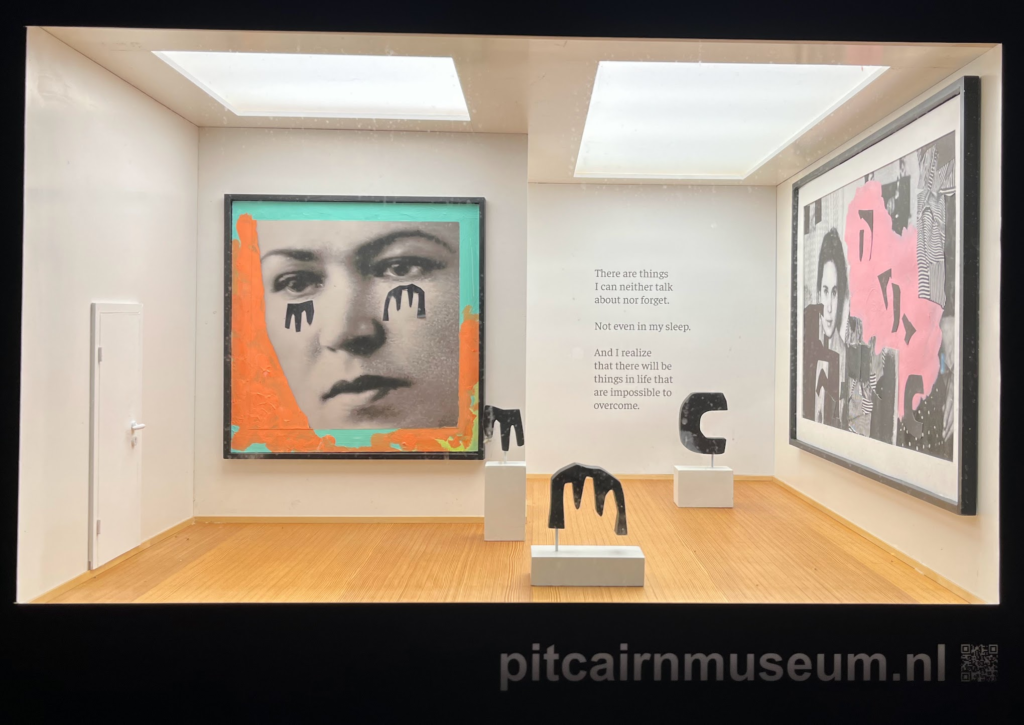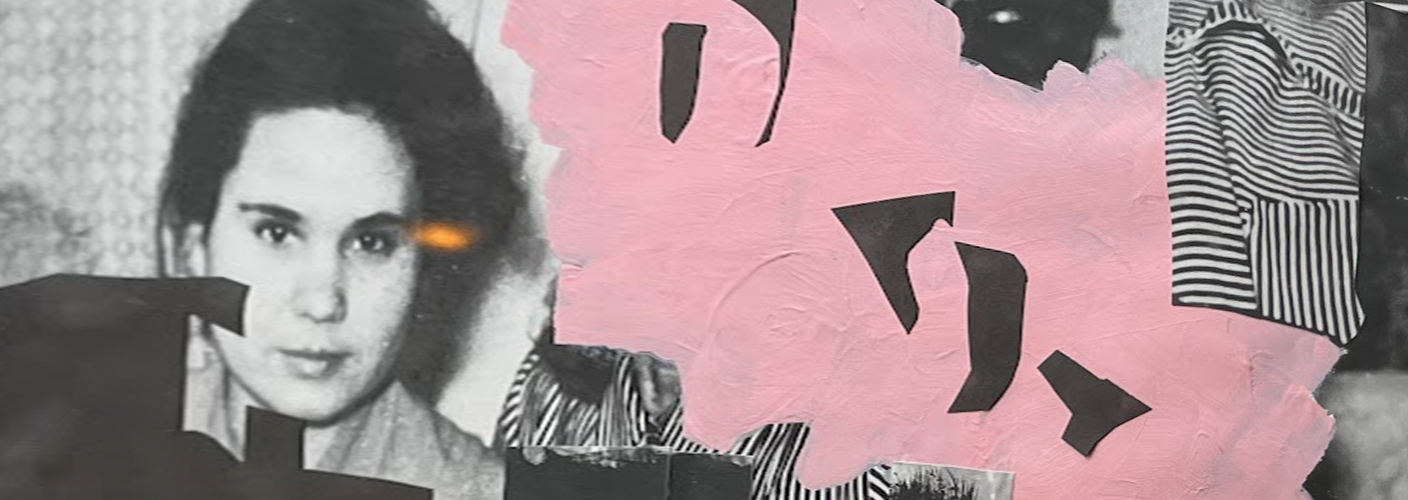Being approximately the size of a large shoebox, the Pitcairn Museum for Contemporary Art is, probably, the world’s smallest museum. I walk past it several times a week, and would happily say it’s my favourite museum. But I’ve never seen any kind of
seriouswriting about it, so in the spirit of living the change, I’m going to try to make this a recurring feature.
Let’s, as the Pitcairn asks us to imagine we’re doing, stand in the space for a moment.

Right away, and I’m sorry to start this first Pitcairn Review this way, I’m bored. I’m sorry. This is where I admit a personal bias — I’m simply not big on collage.
The thing about collage is, and I say this with all the respect I think it deserves, collage is, for the most part, an art form of the otherwise unskilled. Can’t draw? Can’t figure out how the camera works? Don’t have the humiliation fetish you need for improv comedy? Why not try collage! What does it even mean to be good at collage? That you don’t throw out enough magazines? I think if collage is ever good, good collage is surely about deriving new meaning from the images used and their juxtaposition.
Just clicking through the photomontage work of, say, Dada pioneer Hannah Höch, I’m getting clear themes, I’m getting a clear sense of what she’s talking about. There’s elements of deconstructing and playing with the shifting gender roles of the post-New Woman period, there’s a lively playfulness even in her sadder work. But what new meaning does Kleivan share with us here? What exactly is communicated to us in this space besides “the artist has trauma she’s not talking about,” which she just says out loud in the, honestly, banal poem on the back wall?
I don’t want to say “tell me more about your trauma.” I’m fairly open about my own, because I find it helpful to both own it and talk through it, but that obviously isn’t and shouldn’t be universal. If anything, there’s something to be said for the idea that we millennials — and maybe Gen Z even more so — talk about our trauma too much. That we let ourselves be defined by it, and that, in art especially, it’s become a shortcut to Meaning. Who are we without Trauma? Do we exist without it? I think it might be in the soil we grew out of.
But Kleivan isn’t a millennial — the internet tells me she’s 63, a few years older than my parents. A 63-year old Norwegian artist based in Denmark probably thinks the way we talk about trauma is, frankly, fucking insane. Somewhere between alienating and bizarre. It used to be this was stuff you took to the grave. Published in a memoir, maybe, right. We don’t know what trauma the artist is referring to here. We can’t know, that’s the point — a lot of bad shit can happen in 63 years. And that’s something we’re all just gonna have to live with.
But I’m sorry, I still think the work is fucking boring.
The Pitcairn does not publish images of its full exhibits until they’re already gone, but with limited local exceptions, hi Reinder, I’m writing for a fairly global audience here. To publish without an image of the full exhibit robs that international audience of context, and to publish with full images spoils the full exhibition for people who might still want to go see it. As a compromise, I’m postponing publication until a week before the exhibition closes.


… You could find better poetry on Tumblr in 2012
The whole thing really is… Not just boring, but lazy. Acceptable if you are still young and inexperienced, and internet culture is basically your whole reference for everything ever
But a 63yo?? Seriously? No.
Yeah, the age of the artist simultaneously makes me go “I sort of get where this is coming from,” AND “but come on, you can do better than this.”